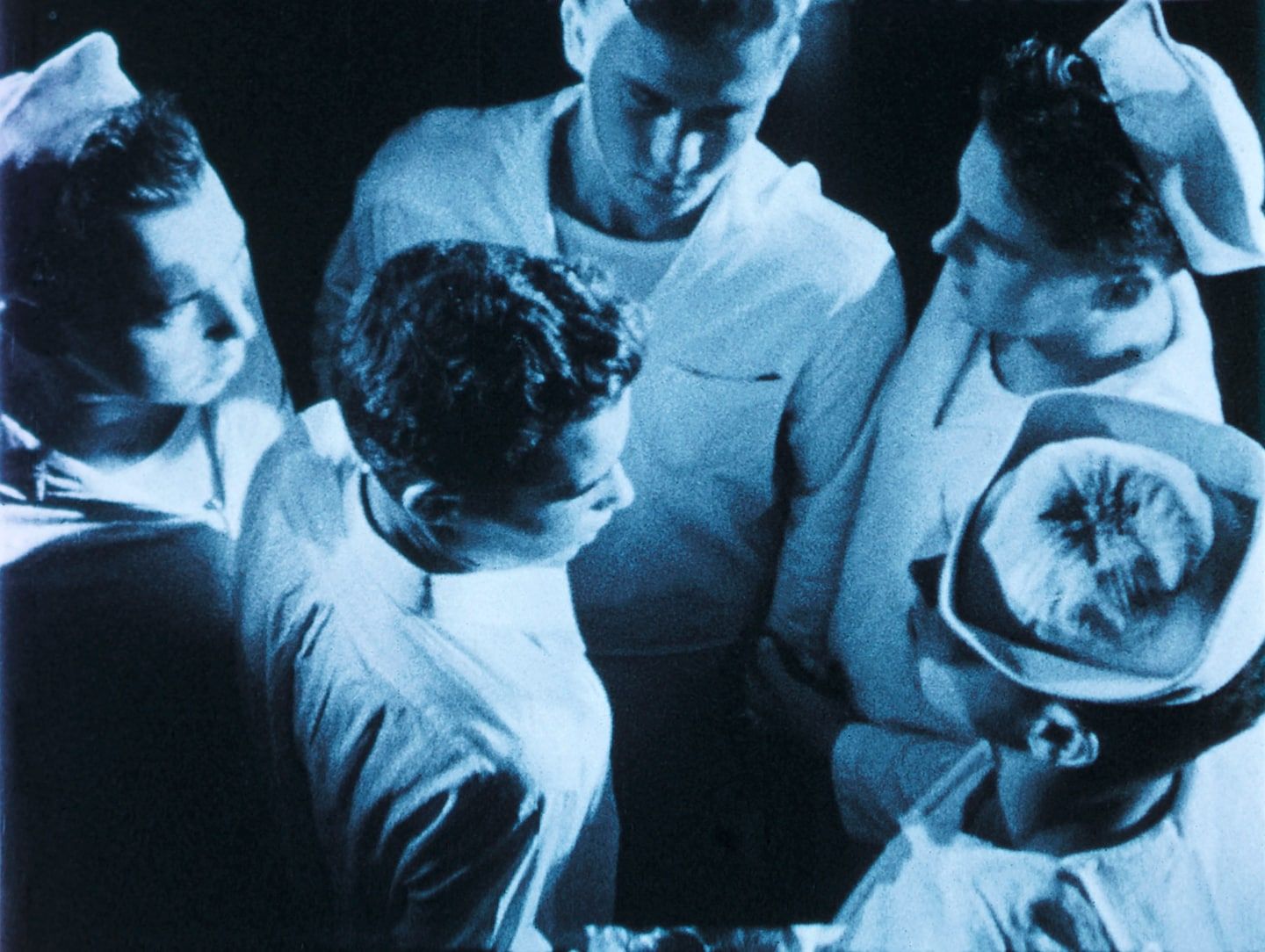Kenneth Anger, queer filmmaker and avant-garde pioneer, dies at 96
Listen 9 min Gift Article Share
When his parents left town for a funeral in 1947, Kenneth Anger invited a few friends over to their Beverly Hills bungalow, moved the furniture to the garden and turned the living room into a film set. Wp Get the full experience. Choose your plan ArrowRight With a 16-millimeter camera and film stock that he later said had been stolen from the Navy, he made an experimental psychodrama, “Fireworks,” that lit up art-house theaters like a Roman candle.
Dreamlike and homoerotic, the 14-minute film showed Mr. Anger cradled in the arms of a sailor, a pose evoking Michelangelo’s “Pietà”; beaten with chains by sailors who cut open his chest to expose a mysterious ticking device; and sleeping alongside a man whose face is masked by a crown of light. In one shot, a sailor opens his pants to reveal a firework, then leans backward as sparks fly into the air.
“This flick is all I have to say about being 17, the United States Navy, American Christmas and the Fourth of July,” Mr. Anger once said. It also was a daring exploration of gay desire, released at a time when sodomy laws targeted same-sex couples nationwide. The film led to an obscenity trial in Los Angeles, where a theater operator’s conviction was reversed on appeal, and the movie became what film scholar Ryan Powell once described as “arguably the highest profile homoerotic film of the postwar years.”
Mr. Anger, who died May 11 at 96, went on to make two dozen surreal, eye-popping and largely dialogue-free experimental films, drawing on his interests in Tinseltown glamour and the English occultist Aleister Crowley, whose teachings he studied as an adherent of the religious movement Thelema.
Advertisement
“Making a movie is like casting a spell,” said Mr. Anger, who had the name Lucifer tattooed on his chest and cast Anton LaVey, the founder of the Church of Satan, in his 1969 film “Invocation of My Demon Brother.” (He later clarified that he was a paganist, not a Satanist, and was more interested in appreciating nature than in practicing “black magic.”)
Although Mr. Anger’s movies never made it to the multiplex, they were credited with paving the way for modern music videos and influencing directors including Martin Scorsese, Dennis Hopper and John Waters, who called him “scarily beneath, above and beyond the real thing.”
Mr. Anger spent years working on his movies, often pausing production until he had enough money to buy additional film. He was backed for a time by the philanthropist John Paul Getty Jr. and supplemented his income by writing a pair of “Hollywood Babylon” books — salacious compendiums of film-industry scandals that sold tens of thousands of copies but were largely inaccurate.
Advertisement
“He was one of the founders, along with Maya Deren, of the whole movement of American avant-garde film that emerged right after World War II,” the film scholar David Sterritt said in a 2020 interview. “The idea that you can make a movie at your parents’ home while they’re away — do these tiny movies but do them carefully, meticulously, exactly the way you want them — was a great strike out against industrial cinema.”
Mr. Anger’s most popular film, “Scorpio Rising” (1963), was among the first to use a pop-rock soundtrack, juxtaposing images of leather-clad motorcyclists with songs such as Bobby Vinton’s “Blue Velvet.” The half-hour short was purportedly a documentary, following a group of bikers Mr. Anger met at Coney Island, and alternately treated the motorcyclists as sex symbols, neo-Nazis and would-be messiahs, intercutting footage from a Christian educational film about Jesus.
The film became a sensation in New York, where it inspired “elegant uptown boutiques” to fill their display windows with motorcycle gear, according to a New York Times report.
Advertisement
Like “Fireworks,” it also led to an obscenity trial in Los Angeles, where a theater manager’s conviction was overturned when a three-judge panel deemed that the movie was not “hard core pornography.” (It featured brief flashes of nudity.)
While Mr. Anger’s work was exhibited at institutions including the Whitney Museum of American Art and MoMA PS1 in New York, he was best known in some quarters not for his films, but rather for the gossip-mongering in “Hollywood Babylon.”
Widely released in the United States in 1975, more than 15 years after it was first published in France, the book included a gruesome photo of the actress Jayne Mansfield’s fatal car crash, excerpts from the movie star Mary Astor’s purported “love diary” and a chronicle of the forced marriage in 1924 between the filmmaker Charlie Chaplin and the actress Lita Grey, who was underage and pregnant. “Well, boys,” Mr. Anger reported Chaplin’s saying at the wedding reception, “this is better than the penitentiary.”
Advertisement
Mr. Anger was accused of smearing the reputations of old Hollywood stars (most of his subjects were dead, which shielded him from lawsuits) and sensationalizing tragedy. “If a book such as this can be said to have charm, I think it lies in the fact that here is a book without one single redeeming merit,” wrote Times reviewer Peter Andrews.
Much of “Hollywood Babylon” and its sequel, published in the mid-1980s, was drawn from secondhand gossip and stories Mr. Anger had heard as a boy. But even if some details were wrong, he suggested, the books nonetheless captured a basic truth: that Hollywood was a “synonym for sin,” where flawed people grappled like Greek gods in search of fame or fortune, while churning out movies that were better at capturing the look of things than the essence.
“I’ve always considered movies evil,” said Mr. Anger, who continued making films into his late 80s. “The day that cinema was invented was a black day for mankind.”
‘Close to being dreams’
As in “Hollywood Babylon,” the stories that Mr. Anger told of his own life mixed fact and fantasy. Although he often claimed he was born in 1930, he was born Kenneth Wilbur Anglemyer in Santa Monica on Feb. 3, 1927, according to “Anger,” an unauthorized biography by Bill Landis.
Advertisement
His father was an engineer at Douglas Aircraft, and Mr. Anger said he grew up in a puritanical home where his parents banned comic books and steered him toward English poetry. He was more interested in movies: By his account, he played the changeling prince in “A Midsummer Night’s Dream” (1935) — film scholars have challenged that claim — and fantasized about running his own movie studio.
Mr. Anger’s dreams were nurtured by his maternal grandmother, who, depending on the story, either worked on costumes for silent films or lived with a woman who had. After he graduated from Beverly Hills High, she helped pay for him to travel to Paris, where he met the filmmaker and writer Jean Cocteau, who had praised “Fireworks” at his 1949 Festival du Film Maudit, a showcase for misunderstood films.
The movie’s admirers also included Tennessee Williams, who called it “the most exciting use of cinema I have ever seen,” and the sex researcher Alfred Kinsey. When Kinsey visited Europe in 1955, Mr. Anger gave him a tour of Italy, with stops at a gay cruising spot in Rome and a dilapidated “abbey” in Sicily, decorated with erotic wall art, that Crowley had once used as a spiritual center.
Advertisement
“I was his gay guide through hell, like Virgil and Dante or whatever,” Mr. Anger told James H. Jones, a Kinsey biographer.
Mr. Anger spent about a dozen years in Europe, where he worked as an assistant to the French film archivist Henri Langlois and made movies including “Rabbit’s Moon” (1950), about a white-faced clown who tries to pull down the moon, and “Eaux d’artifice” (1953), in which a woman strolls through a lush, fountain-filled garden dressed in an 18th-century gown. The latter was selected for the Library of Congress’s National Film Registry in 1993.
After the death of his mother, Mr. Anger temporarily returned to the United States and made “Inauguration of the Pleasure Dome” (1954), a psychedelic depiction of masked gods and goddesses that he filmed at the Hollywood home of Samson De Brier, who also starred in the movie. The cast included the writer Anaïs Nin, a friend from Paris who played the war and sex goddess Astarte, and the occultist Marjorie Cameron, who had deepened his interest in Thelema.
He later collaborated with the musicians Mick Jagger, Marianne Faithfull and Bobby Beausoleil, an associate of Charles Manson’s who was convicted of murder and wrote the soundtrack for Mr. Anger’s long-gestating movie “Lucifer Rising” while serving a life sentence in prison.
Advertisement
Completed in the early 1980s, the film concluded with an image of a UFO hovering over ancient Egyptian ruins and was part of what Mr. Anger described as his “Magick Lantern Cycle.”
“They are close to being dreams,” he told the Guardian of his films, “and in dreams, you don’t have to analyze what everything means.”
Mr. Anger went more than two decades without finishing a film before returning with an anti-nicotine short, “Don’t Smoke That Cigarette” (1999). His later works included “Elliot’s Suicide” (2004), a tribute to the singer Elliott Smith, a friend and neighbor who died the previous year, and “Ich Will!” (2008), which repurposed Hitler Youth propaganda footage.
“You leave it feeling you have peered over the abyss into something evil,” a journalist for Britain’s Esquire magazine wrote.
Mr. Anger leaves no immediate survivors. His death, at an assisted-living facility in Yucca Valley, Calif., was confirmed by a representative of Sprüth Magers gallery, which has shown Mr. Anger’s work for more than a decade. The gallery did not cite a cause.
Advertisement
Mr. Anger said that he had considered publishing a third volume of “Hollywood Babylon” but had little interest in the recent crop of Hollywood actors and feared being sued by the Church of Scientology. He preferred to remember older generations of stars, whose graves he visited on walks through the Hollywood Forever Cemetery.
“Oddly enough, Paramount Pictures, right next door, is constructed over an ancient cemetery,” he claimed in a 2017 interview with the Hollywood Reporter, leading the film studio to issue a denial. “Under the soundstages are hundreds of bodies. They built right on top of it. It’s like a secret that Hollywood doesn’t want people to know.”
GiftOutline Gift Article
Source: The Washington Post


